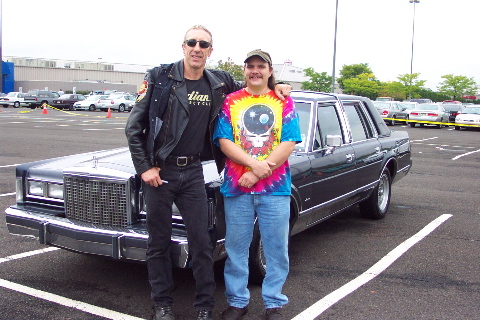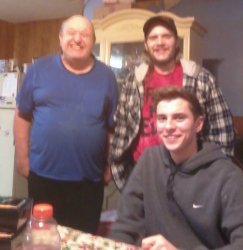Since some of you guys dont seem to come around CVN mush anymore, I decided to put up a copy of something I just came up with.
This took me a couple of days to come up with. I finally decided to take a few minutes and draw it up in CAD to see how everything will fit.
As long as the distance between the pivot points are the same, the clutch quadrant should rotate the same number of degrees. I drew it with the pivots of the quadrant and pedal centered so I wouldnt keep running into wierd angles while I was drawing, but nothing would keep you from moving the quadrant up or down a bit for clearance.
I already have access to the heim joints on the end of the rod that goes between the pedal and the quadrant,(actuator rod) but someone else might want to use something a bit cheaper. By using a matched pair heim joints with female threads,(one normal another with reverse threads and the rod to match) I can vary the length of the rod to adjust the cable, and allow for differences in mounting.
I could have gone cheaper and used bushings instead of bearings on the quadrant, but I got the pillow blocks on ebay dirt cheap so I went with overkill. I like overkill!!! Muhahahahahahahahaha (....especially when it is cheap) The quadrant wont be wearing out, and or making noise.
This may or may not work for you guys who have EFI. I am using a carb so this will probably occupy some of the space where the ecm would usually be. However this gives me some extra slack in my clutch cable and minimizes bends so it should work smooth and last a long time, all while getting it away from the headers.
I have the benifit of having my 1991 out in the barn stripped down to practically a shell on a rolling chassis.
I can take measurments and test fit everything easily. Also If I drill a whole in the wrong place, etc it doesnt matter.
If anyone else thinks they may want to try this, you will need the following at a minumum.
#1 extra CV brake pedal. (did these change any from 79-91???) Make sure to get the little plastic bushings, or order new ones from the dealer. ($2.02 each, minimum of 4 which is exactly how many I need.)
#2 some nice 1/2 bar stock from the local metal shop. The brake pedal and bushings ride on this. I drilled out one side of the original pedal housing to accept the 1/2" barstock instead of the roughly 1/4" original bolt. The barstock sticks out far enough to hang the extra pedal off of. Considering the strength of the housing, it should be plenty strong. But just in case a buddy of mine is taking it to work with him to spot weld the crap out of the seams on it. (overkill)
#3 grinder and a BIG hammer. The hardened steel pin that actuates the brake booster is pressed in with a gazillion ton press and THEN welded. In other words take your time and beat the crap out of it with a huge hammer. The pin may or may not be in the way but I decided to play it safe. It all depends on how you mount the quadrant. If you mount it luch lower you may have trouble with the rod that goes between the pedal and the quadrant hitting it when the pedal is pushed.
#4 aluminum clutch quadrant. I doubt a stock one would last very long.
Bryan
here is a link to the pic over on cvn.
P.s. how do you attach a pic here?
Bryan
This took me a couple of days to come up with. I finally decided to take a few minutes and draw it up in CAD to see how everything will fit.
As long as the distance between the pivot points are the same, the clutch quadrant should rotate the same number of degrees. I drew it with the pivots of the quadrant and pedal centered so I wouldnt keep running into wierd angles while I was drawing, but nothing would keep you from moving the quadrant up or down a bit for clearance.
I already have access to the heim joints on the end of the rod that goes between the pedal and the quadrant,(actuator rod) but someone else might want to use something a bit cheaper. By using a matched pair heim joints with female threads,(one normal another with reverse threads and the rod to match) I can vary the length of the rod to adjust the cable, and allow for differences in mounting.
I could have gone cheaper and used bushings instead of bearings on the quadrant, but I got the pillow blocks on ebay dirt cheap so I went with overkill. I like overkill!!! Muhahahahahahahahaha (....especially when it is cheap) The quadrant wont be wearing out, and or making noise.
This may or may not work for you guys who have EFI. I am using a carb so this will probably occupy some of the space where the ecm would usually be. However this gives me some extra slack in my clutch cable and minimizes bends so it should work smooth and last a long time, all while getting it away from the headers.
I have the benifit of having my 1991 out in the barn stripped down to practically a shell on a rolling chassis.
I can take measurments and test fit everything easily. Also If I drill a whole in the wrong place, etc it doesnt matter.
If anyone else thinks they may want to try this, you will need the following at a minumum.
#1 extra CV brake pedal. (did these change any from 79-91???) Make sure to get the little plastic bushings, or order new ones from the dealer. ($2.02 each, minimum of 4 which is exactly how many I need.)
#2 some nice 1/2 bar stock from the local metal shop. The brake pedal and bushings ride on this. I drilled out one side of the original pedal housing to accept the 1/2" barstock instead of the roughly 1/4" original bolt. The barstock sticks out far enough to hang the extra pedal off of. Considering the strength of the housing, it should be plenty strong. But just in case a buddy of mine is taking it to work with him to spot weld the crap out of the seams on it. (overkill)
#3 grinder and a BIG hammer. The hardened steel pin that actuates the brake booster is pressed in with a gazillion ton press and THEN welded. In other words take your time and beat the crap out of it with a huge hammer. The pin may or may not be in the way but I decided to play it safe. It all depends on how you mount the quadrant. If you mount it luch lower you may have trouble with the rod that goes between the pedal and the quadrant hitting it when the pedal is pushed.
#4 aluminum clutch quadrant. I doubt a stock one would last very long.
Bryan
here is a link to the pic over on cvn.
P.s. how do you attach a pic here?
Bryan








Comment